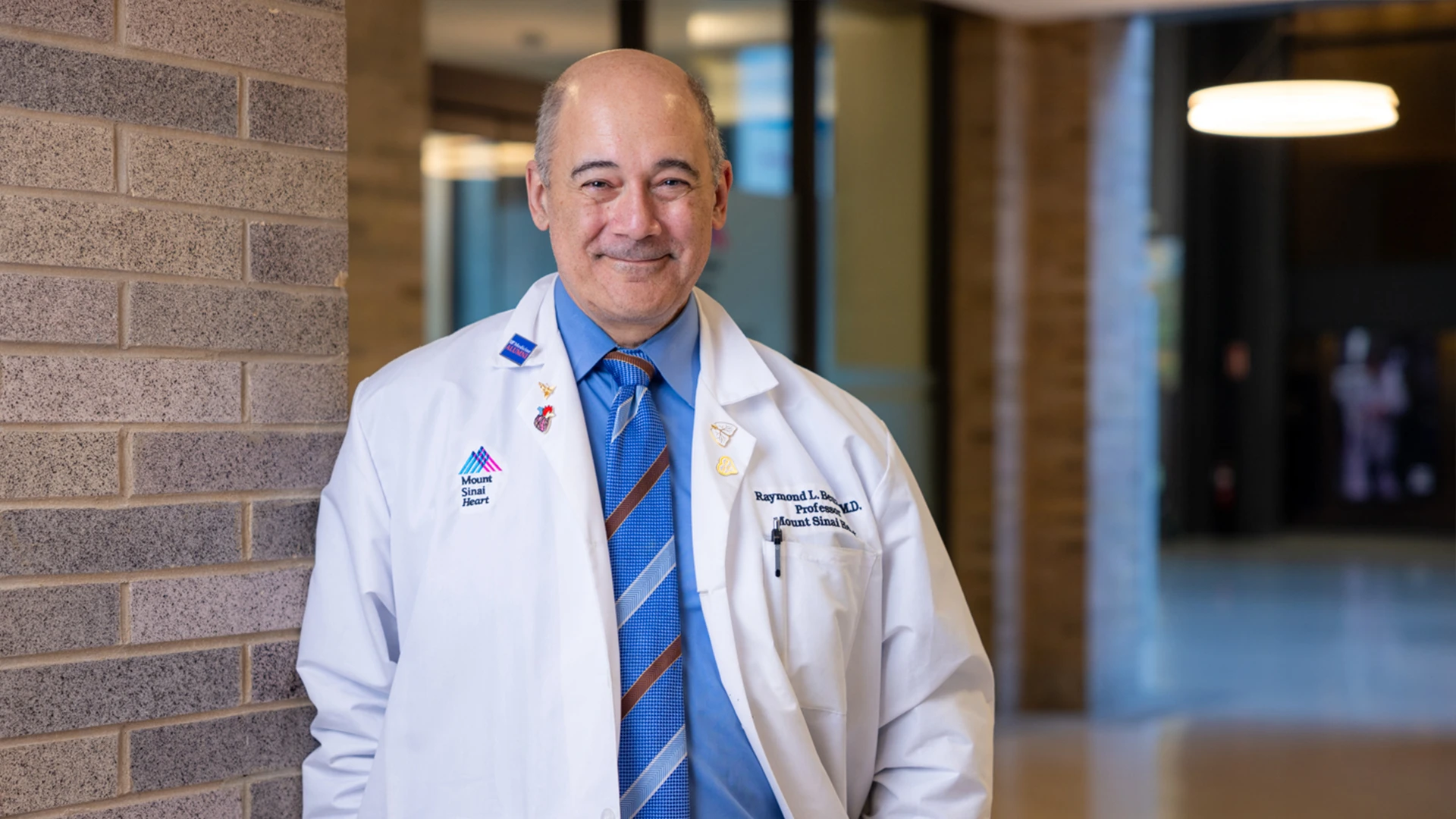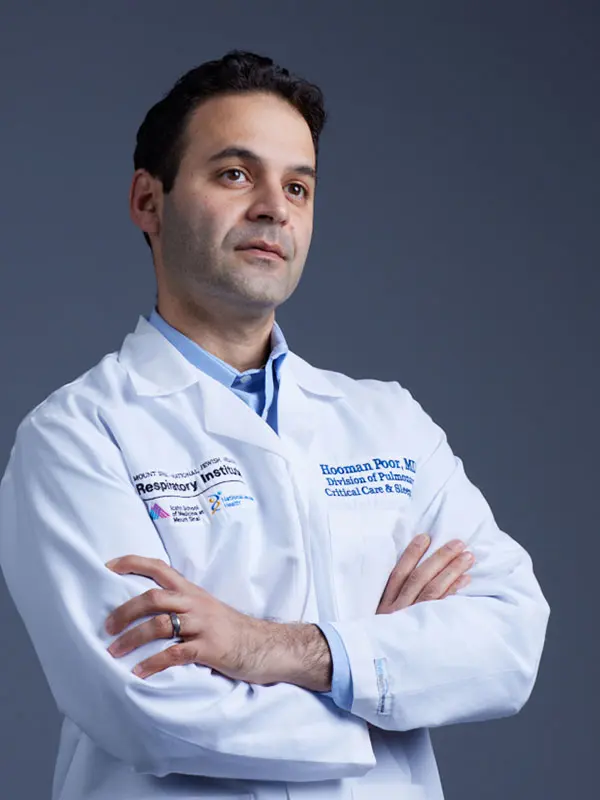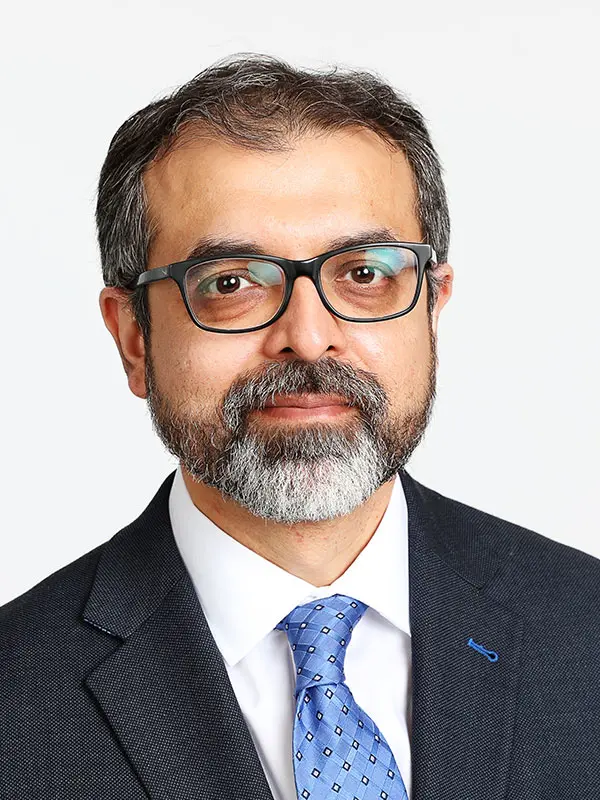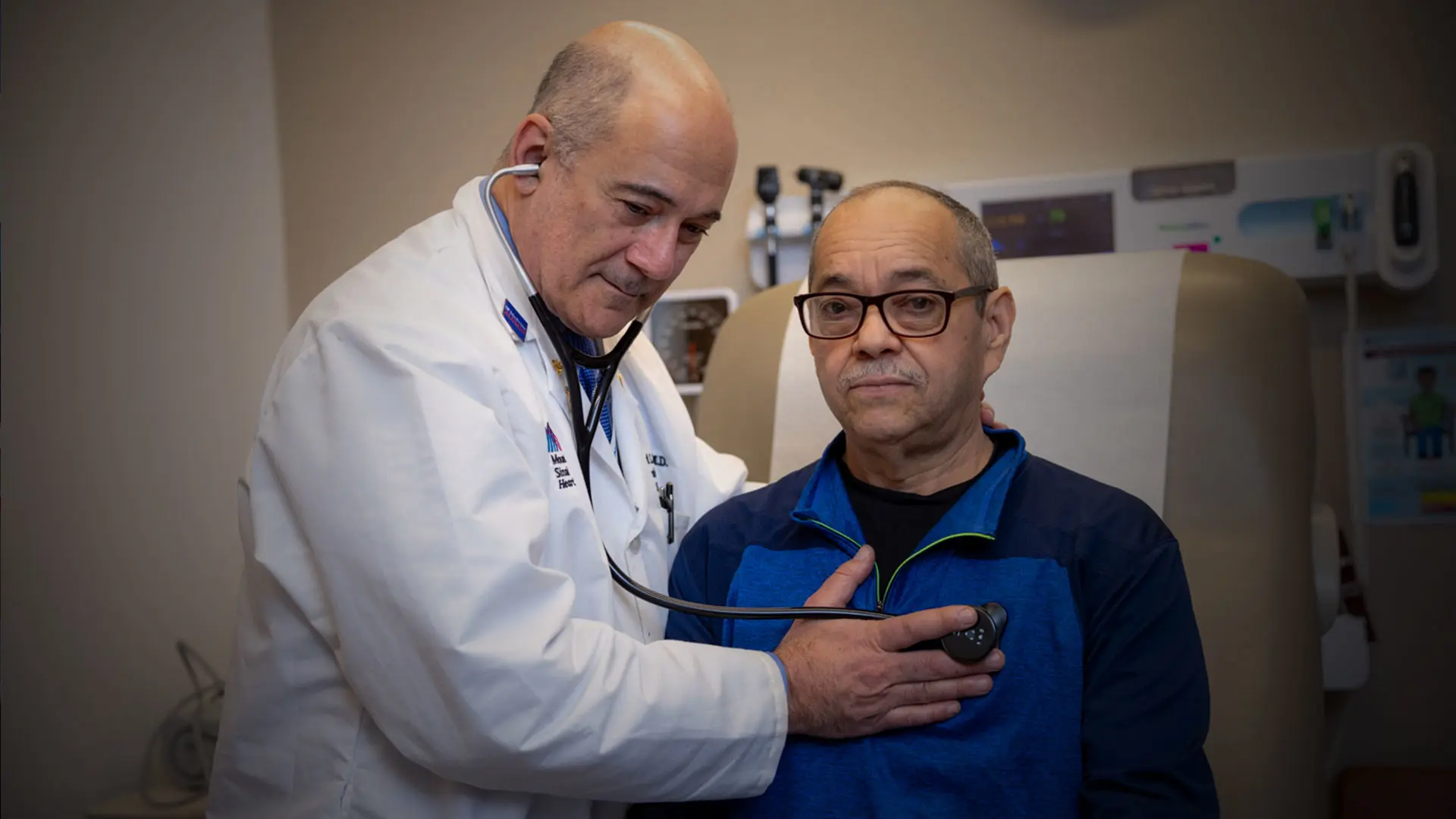As pulmonary hypertension (PH) came to be understood as a disease straddling two distinct clinical worlds, it’s not surprising that its treatment also became siloed into pulmonologist and cardiologist camps.
Mount Sinai is working to break that mold by becoming one of a handful of medical centers in the country to join the twin specialties into a multidisciplinary whole, with major implications for not only treatment but research—just as the field is on the verge of major breakthroughs targeting the chronic, progressive, and potentially fatal disorder of PH.
Heading up the integrated program is one of the world’s leading experts in PH, Raymond Benza, MD, who joined Mount Sinai in 2023 as Professor of Medicine (Cardiology) at the Icahn School of Medicine at Mount Sinai and Director for Pulmonary Hypertension for the Mount Sinai Health System.
Dr. Benza developed the REVEAL Risk Score Calculator, now the global standard of care for determining initial PH therapy and appropriate escalation to improve patient outcomes. In addition to his 30 years performing heart and lung transplants and allied research, Dr. Benza has been involved in the development and clinical trialing of most new PH therapeutics on the market. He is also the architect of Mount Sinai’s new integrated PH program.
“It’s a major change in direction for the Health System, involving the consolidation and harmonization of three pulmonary hypertension programs that have developed independently within cardiology, pulmonology, and adult congenital heart disease,” he says. “My job, and primary goal for the next two years, is to sew the pieces together into a unified program that can take advantage of our expertise in each of these disciplines. Just as importantly, we want to use it as a platform to bring in a sizable number of clinical research programs and protocols to develop innovative new treatments in each of the five clinical subgroups for pulmonary hypertension.”

Dr. Benza and his team are using a cross-disciplinary approach to develop new therapies for all five forms of PH.
Those subgroups, developed by the World Health Organization (WHO), consist of pulmonary arterial hypertension, PH due to left-side heart disease, PH due to chronic lung disease, chronic thromboembolic PH, and PH with unclear and/or multifactorial mechanisms. Across these five subgroups, PH affects roughly 1 percent of the global population; more than half of patients with heart failure may be affected, making it likely that all cardiologists will encounter PH in their practices.
As envisioned by its architects, the new pathway and protocols for PH at Mount Sinai will draw together a diverse and highly seasoned team of cardiologists, pulmonologists, and cardiac and cardiothoracic surgeons and interventionalists.
“For patients, our joint program to gather all these resources will mean more extensive evaluation and diagnosis of their cardiopulmonary disease,” notes Hooman Poor, MD, Associate Professor of Medicine (Pulmonary, Critical Care, and Sleep Medicine, and Cardiology) at the Icahn School of Medicine at Mount Sinai. “And for physicians, it will mean more opportunities for cardiologists to learn the nuances of treating patients with cardiopulmonary disease from pulmonologists, and vice versa, as we work toward building a common experience.”
No discipline stands to benefit more from this new approach than research. Dr. Benza’s considerable presence in the field has already enabled Mount Sinai to more than double its volume of major research projects over the past year, looking into treatments across the full range of PH subgroups. One involves a $3 million National Institutes of Health grant to develop a novel cardiopulmonary support device to manage right-sided heart failure, and new risk prediction algorithms to better guide medical therapy for pulmonary arterial hypertension patients in Group 1. Joining Dr. Benza in this work is Maria Giovanna Trivieri, MD, PhD, Associate Professor of Medicine (Cardiology) and Director of the PH program at The Mount Sinai Hospital, whose lab studies the mechanisms of Group 1 disease, defined by the loss and obstructive remodeling of the pulmonary vascular bed.
The team of Drs. Benza, Poor, Trivieri, and Ali N. Zaidi, MD, Director of the Adult Congenital Heart Disease Center at Mount Sinai, is making progress with an impressive portfolio of trials for new therapies across all forms of pulmonary hypertension. One such effort helped pave the way for approval by the U.S. Food and Drug Administration (FDA) in March 2024 of sotatercept, the first FDA-approved activin-signaling inhibitor therapy for pulmonary arterial hypertension, which has shown remarkable results in some patients, and is opening up promising research avenues in each of the WHO PH subgroups.
“Sotatercept is only indicated at this point for the smallest number of patients in Group 1,” notes Dr. Benza, “which is why we are bringing therapies such as sotatercept into a number of trials enrolling patients in Groups 2 and 3 to see if it is equally as efficacious.”
Another major initiative under Dr. Benza involves building a new interventional program for PH patients with right-sided heart failure. This effort will include trials of innovative new pumps and catheters, as well as novel interventional therapies for PH itself involving surgical and catheter-based pulmonary denervation. These projects are on top of building surgical endarterectomy and balloon pulmonary angioplasty programs for chronic thromboembolic PH, which affects up to 9 percent of patients who experience pulmonary emboli.
Major trials and program innovations such as these are setting the stage for an accelerated pace of clinical research and medical advances in PH that have vast potential.
“Industry is much more willing to work with Mount Sinai on the development of new therapies,” points out Dr. Benza, “because it recognizes the level of expertise and collective strength we bring to the research space.”
Featured

Hooman Poor, MD
Associate Professor of Medicine (Pulmonary, Critical Care, and Sleep Medicine, and Cardiology)

Maria Giovanna Trivieri, MD, PhD
Associate Professor of Medicine (Cardiology), and Diagnostic, Molecular, and Interventional Radiology

Ali N. Zaidi, MD
Director of the Adult Congenital Heart Disease Center; Associate Professor of Medicine (Cardiology), and Pediatrics
